Hola Hola, queridos amigos, saludos a todos en especial a la comunidad @hivefood como algunos saben, tenía tiempo que no posteaba por aquí y y bueno, aprovechando que estoy de vuelta decidí compartirles una receta que me encontré y me parece muy bien que sepan de ellas.
english
Hello Hello, dear friends, greetings to everyone especially to the community @hivefood as some of you know, I haven't posted here for a while and well, taking advantage that I'm back I decided to share with you a recipe that I found and I think it's great that you know about them.

El Pan Pita, es un tipo de Pan plano de consumo en el mediterráneo oriental, especialmente en el cercano oriente, cocido en las paredes del horno. Se caracteriza por ser un pan ahuecado el cual puede ser rellenado con todo tipo de comidas.
Etimológicamente, el nombre deriva de la palabra griega moderna πίτα, usada para designar «pastel» o «pan».
El pan pita es uno de los alimentos más antiguos cuyo origen se lo atribuye a medio oriente, especialmente a Egipto, siglos atrás La pita, más conocida por ser de esa especie de panes planos, también tiene sus raíces en ciertas regiones de Grecia, de la India y de África y al ser uno de los alimentos milenarios de esa región del mundo refleja muchas de las costumbres y tradiciones de algunos de estos países. En algunas culturas de África, por ejemplo, es utilizado como una especie de tenedor el cual sirve para que la comida sea llevada a la boca, en regiones más cercanas al Mediterráneo en cambio se usa como una especie de platillo que sostiene y soporta el resto de los alimentos
Para mas información ingresa aqui
english
Pita bread is a type of flat bread consumed in the eastern Mediterranean, especially in the Near East, baked in the oven walls. It is characterized for being a hollowed bread which can be stuffed with all kinds of foods.
Etymologically, the name derives from the modern Greek word πίτα, used to designate "cake" or "bread".
Pita bread is one of the oldest foods whose origin is attributed to the Middle East, especially Egypt, centuries ago. Pita, best known for being one of those flatbreads, also has its roots in certain regions of Greece, India and Africa and being one of the millenary foods of that region of the world reflects many of the customs and traditions of some of these countries. In some African cultures, for example, it is used as a kind of fork which serves to carry the food to the mouth, in regions closer to the Mediterranean it is used as a kind of saucer that holds and supports the rest of the food.
for more information click here.
¡Muy bien, sin mas que decir, manos a la obra!
All right, without further ado, let's get to work!
¡Muy bien, sin mas que decir, manos a la obra!
All right, without further ado, let's get to work!
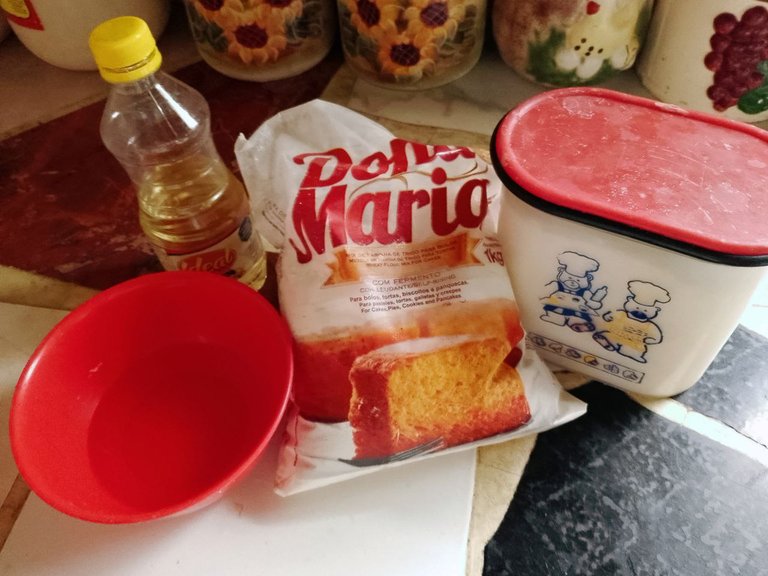
Ingredientes / ingredients
- 500gr harina de trigo / 500gr wheat flour
- 1 vaso de agua de / 1 glass of water
- 30 gr leudante / 30gr leavening agent
- 1 cucharada sopera de aceite de oliva (podemos usar también el que tengamos) / 1 tablespoon of olive oil (we can also use the one we have)
- 1 cucharada de sal / 1 tablespoon of salt
- 1 cucharada de azúcar / 1 tablespoon of sugar
Procedimiento / Procedure
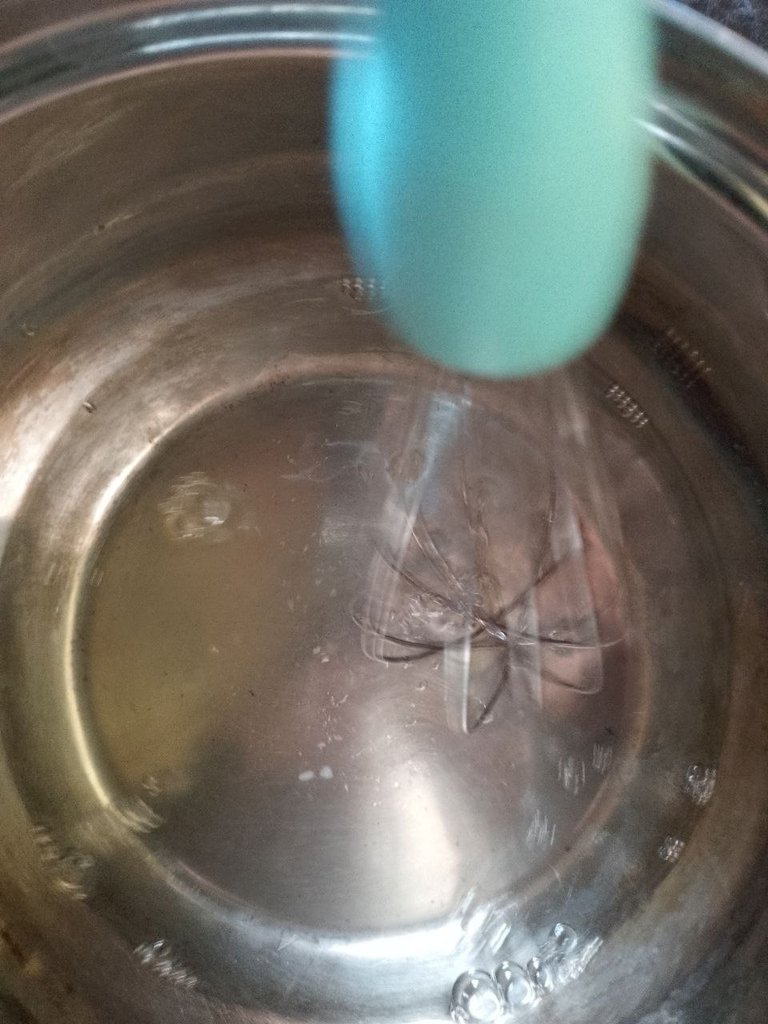 | 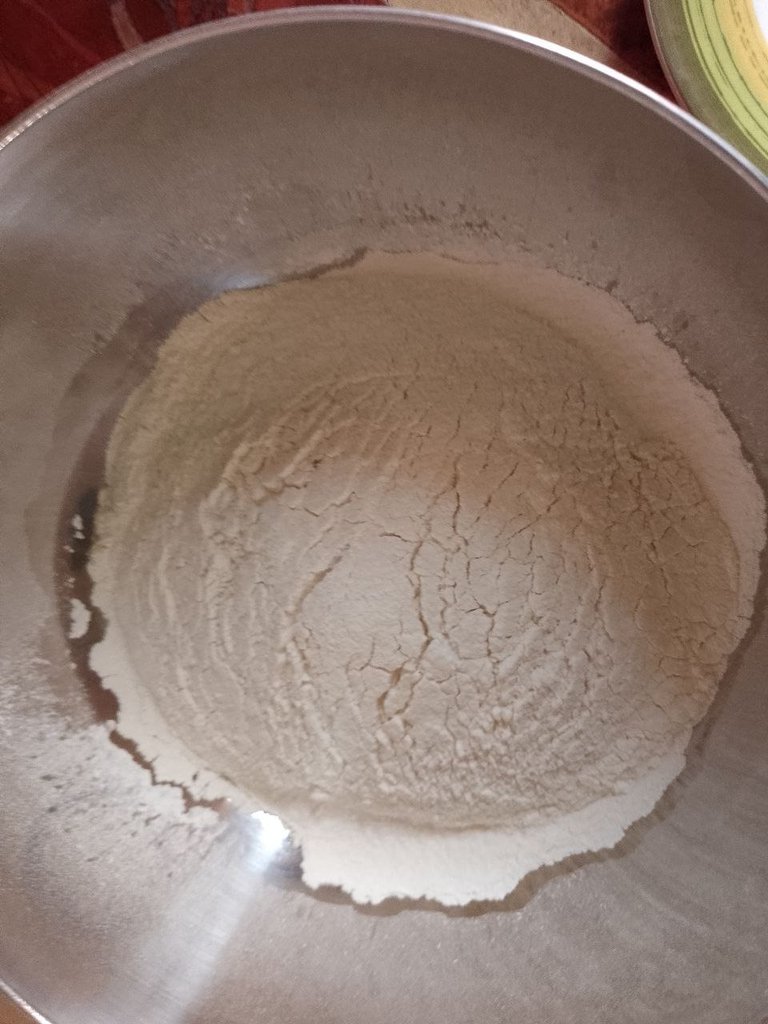 |
|---|
📍 Lo primero que hice fue tibiar el agua, mientras se calentaba el agua iba pesando los demás productos.
Una vez tibia el agua le echas el leudante ( o en mi caso cómo tenía la harina con leudante incluido, me salte ese paso. Así que le eché la sal.
📍 The first thing I did was to warm the water, while the water was heating I was weighing the other products. Once the water is lukewarm you add the leavening agent (or in my case, as I had the flour with leavening agent included, I skipped that step, so I added the salt).
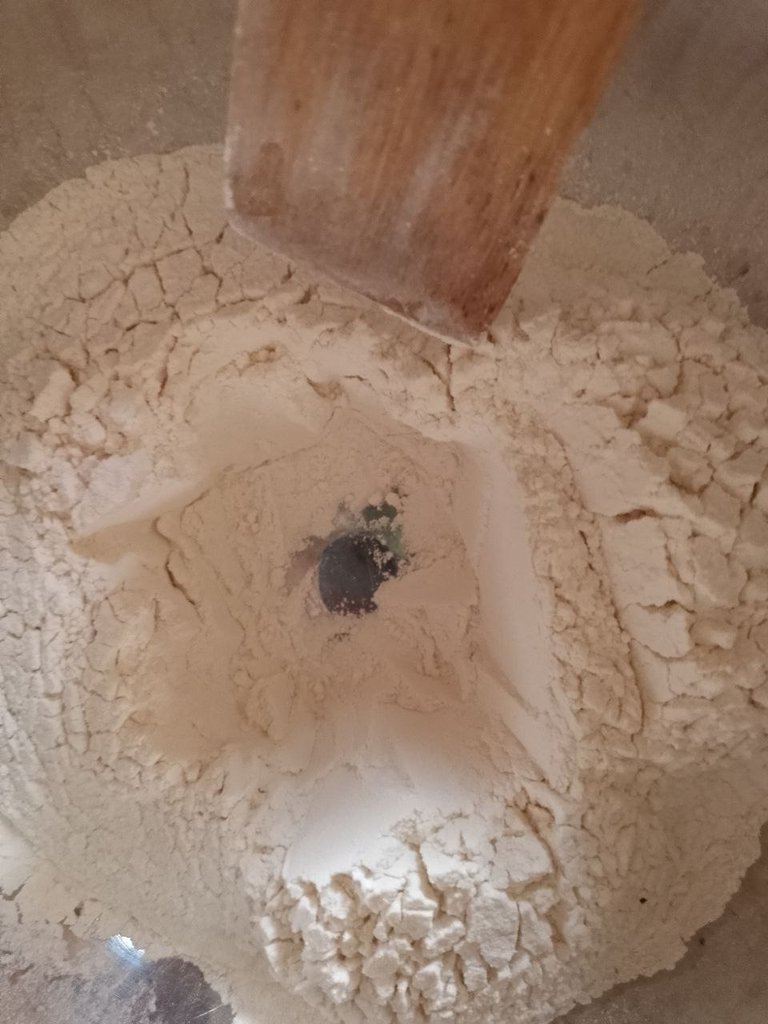 | 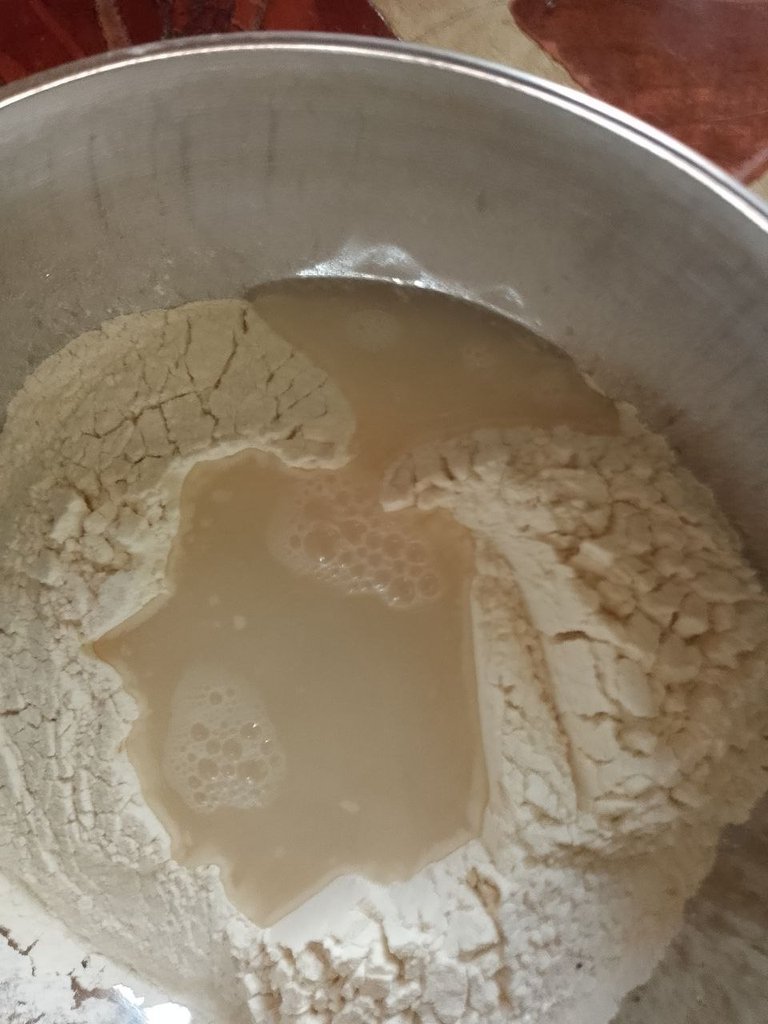 | 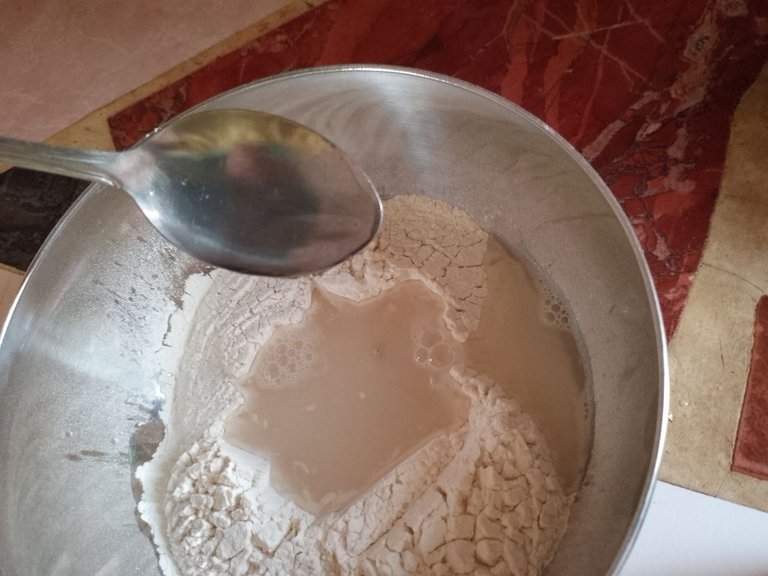 |
|---|
📍 Luego en un bol le echas la harina y le abres un hueco en el medio como si estuvieras jugando en la playa haciendo castillos y procedes a agregarle el agua y la cucharada sopera de aceite de oliva o el que tengas en casa.
📍 Then in a bowl you pour the flour and open a hole in the middle as if you were playing on the beach making castles and proceed to add the water and the tablespoon of olive oil or whatever you have at home.
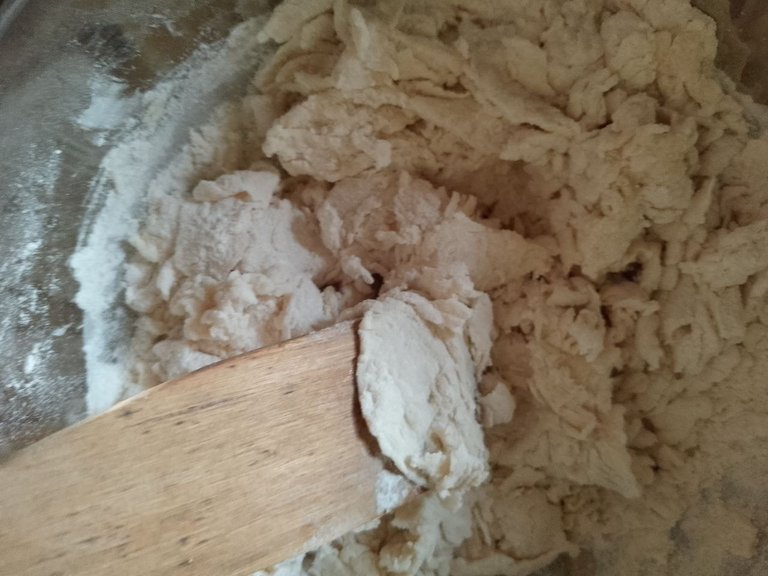 |  | 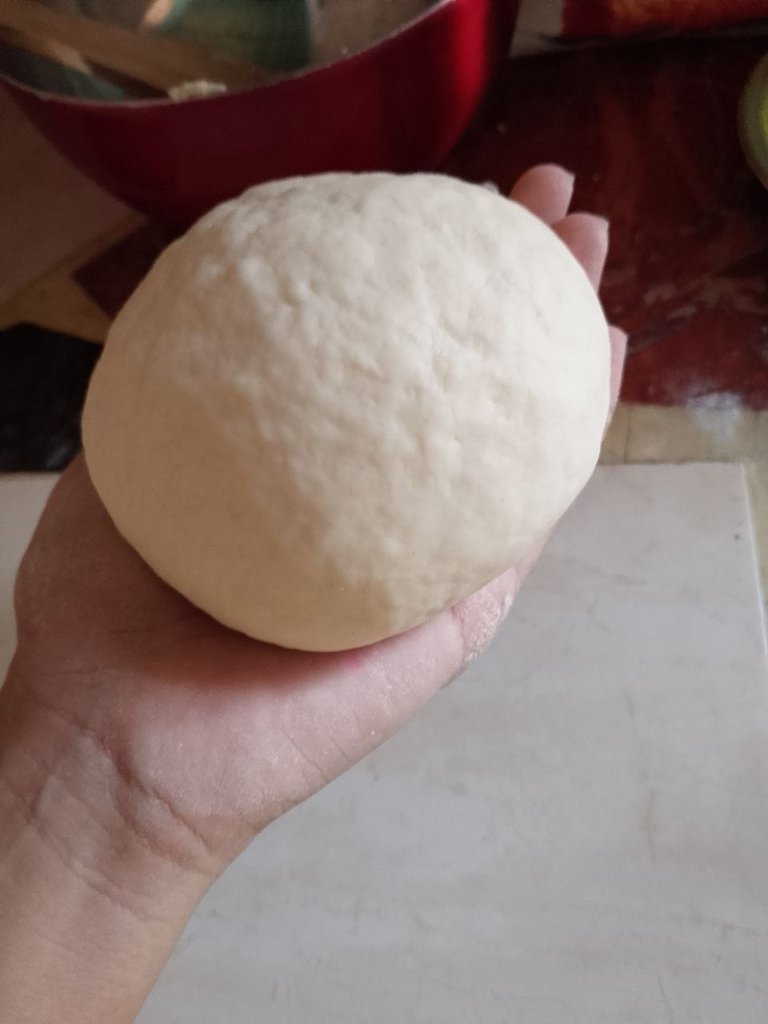 |
|---|
📍 Procedemos a ir mezclando hasta que estén bien integrados los ingredientes. Una vez listo procedemos a dejar reposar en zona ambiente (no en la nevera) por lo menos 30 min de la siguiente forma.
📍 We proceed to mix until the ingredients are well integrated. Once ready we proceed to let it rest in ambient zone (not in the refrigerator) for at least 30 min as follows.
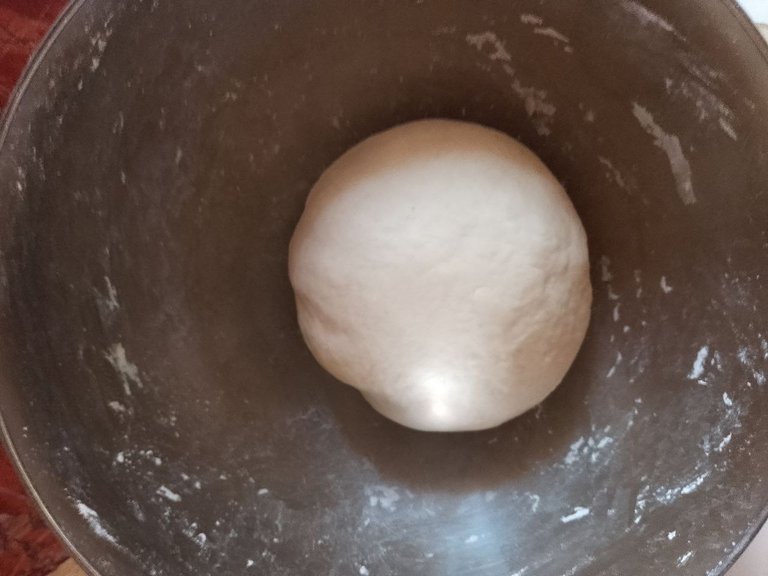 | 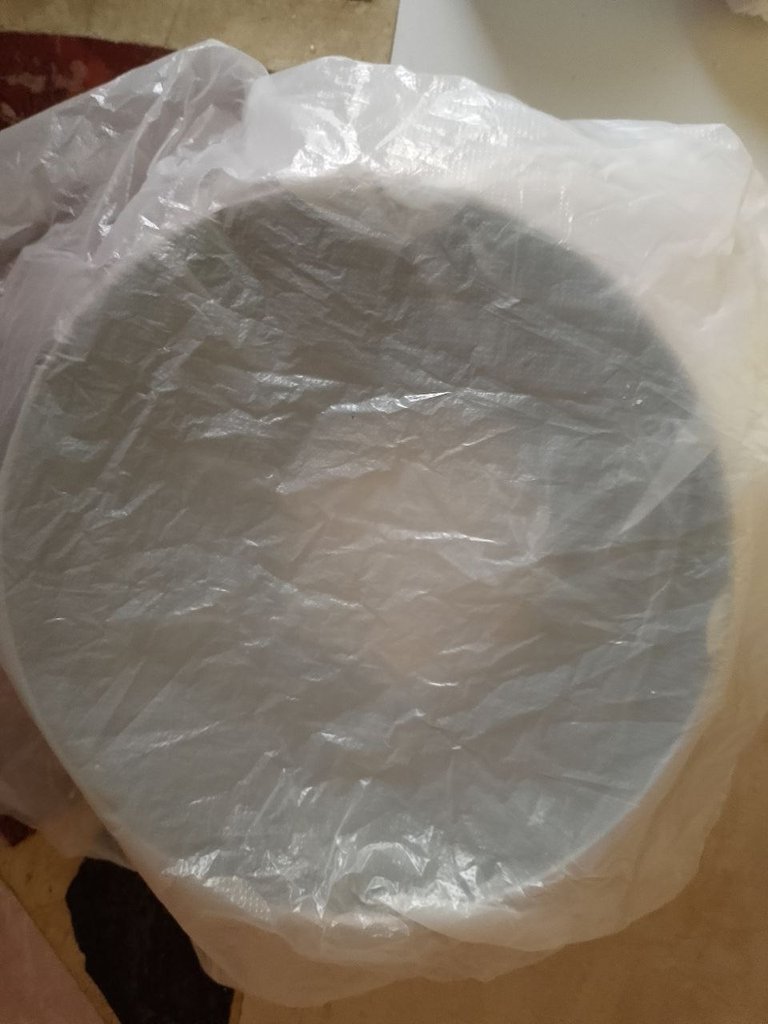 | 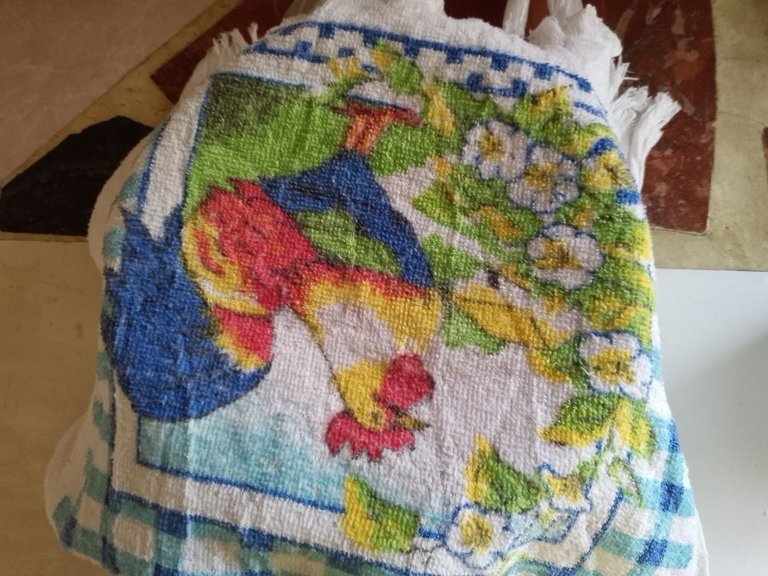 |
|---|

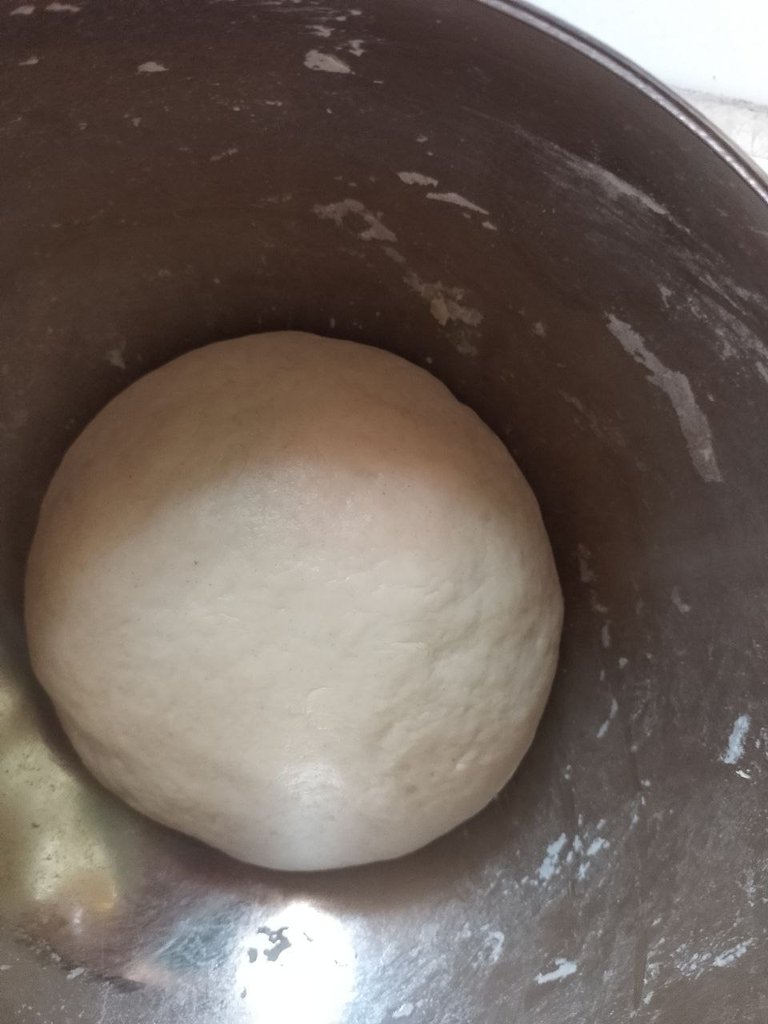 |  |
|---|
📍 Muy bien, ya transcurrido el tiempo, vamos a amasarla otra vez para desgasificar y ahora viene lo bueno.
Cómo no tenía rodillo me las ingenié usando un vaso como rodillo jajaja
📍 Okay, now that the time has elapsed, let's knead it again to degas and now comes the good part. As I didn't have a rolling pin, I managed to use a glass as a rolling pin hahaha.
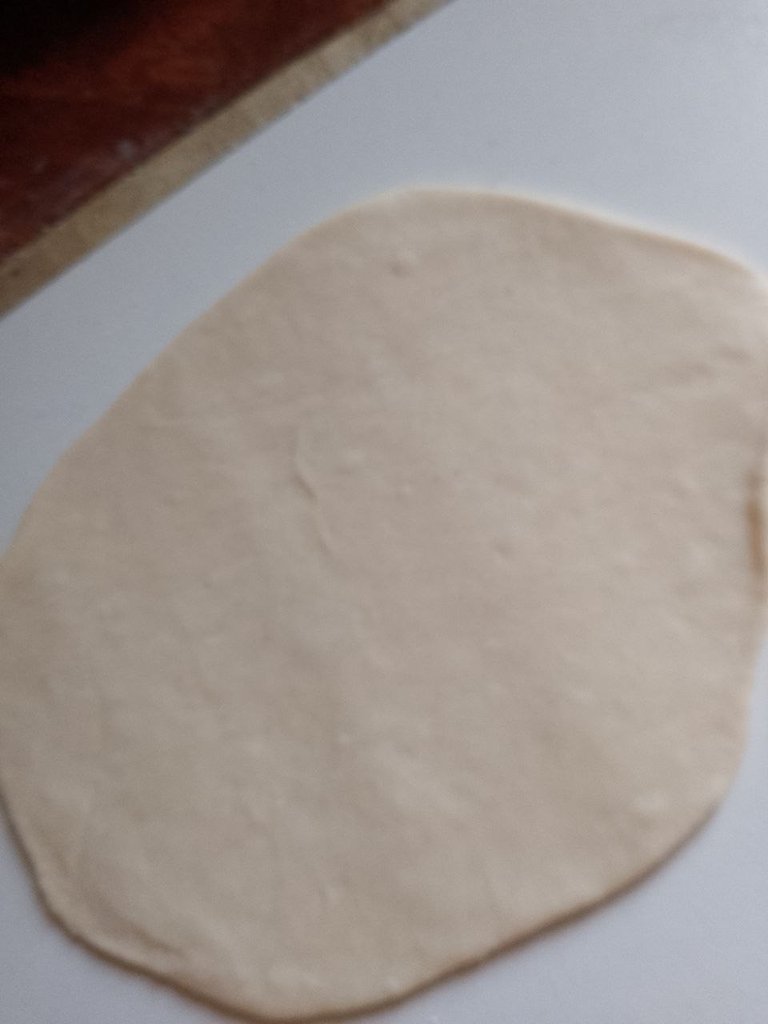 | 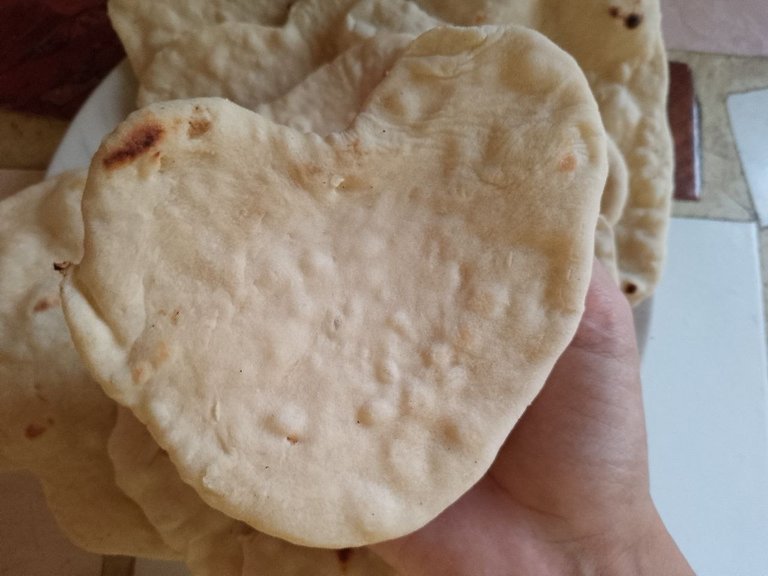 |
|---|
📍Muy bien, ahora colocamos un poquito de harina sobre el lugar donde vas a amasar para que no se pegue y dañes la mezcla e iremos amasando hasta el grosor que tu desees.
Yo las hice delgadas y lo mas redonda posible pero a la hora de desmoldarla para cocinarla agarraban otra forma y entre esos uno me salió como un corazón.
📍 Very well, now place a little flour on the place where you are going to knead so that it does not stick and damage the mixture and we will knead until the thickness you want. I made them thin and as round as possible but when it was time to unmold them for cooking they took another shape and among those I got one like a heart.
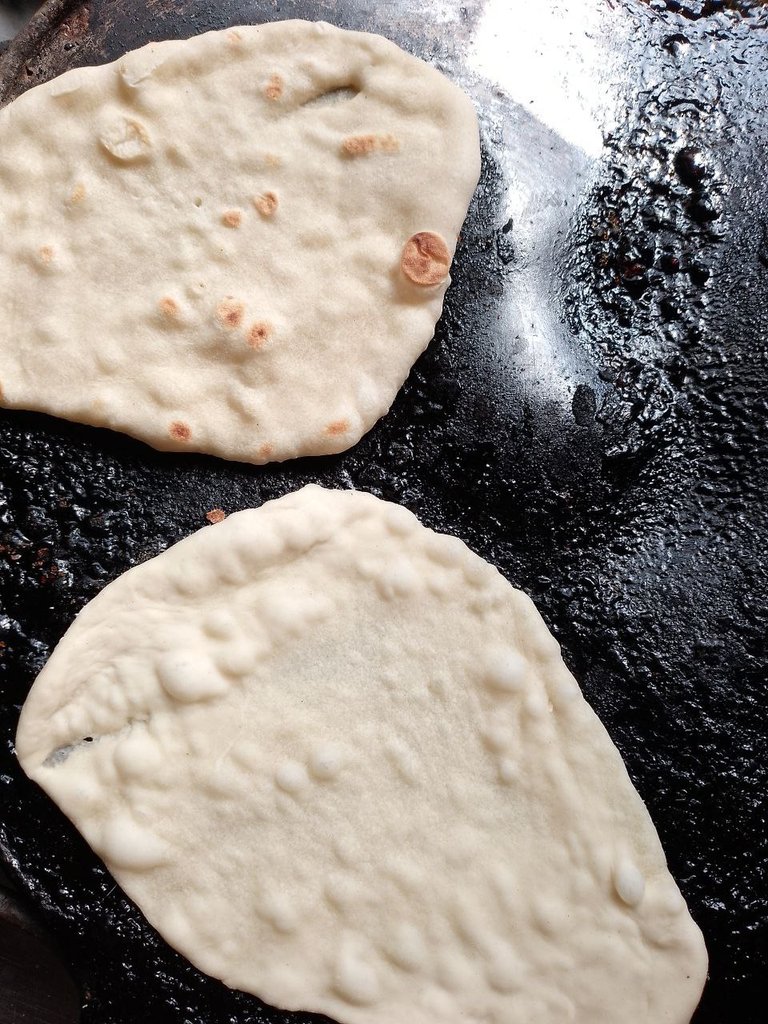
📍 Puedes cocinarlo en horno o en budare, yo las hice en budare ya que las veo mas práctico o si no tienes puedes hacerlo en sartén.
Y estarán lista en menos 5 minutos a fuego medio alto.
📍 You can cook it in the oven or in budare, I made them in budare as I see them more practical or if you don't have it you can do it in a frying pan. And they will be ready in less than 5 minutes at medium high heat.

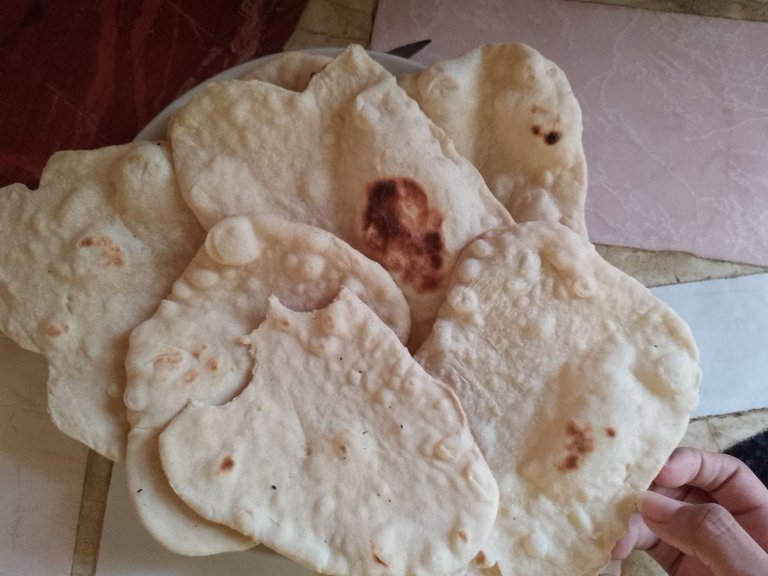
📍 Esta receta no solo me gustó por que considero que tiene las 3B bueno bonito y barato sino porque tambien lo considero mas saludable y es una buena opción o al menos a mi me ha funcionado. Y lo mejor es que tiene muchas formas de comer ya sea como aperitivo o cena.
Bueno amigos, gracias por su visita, espero que pueda ser de ayuda, hasta luego!
📍 Nota: hice la mitad de la receta por si preguntan si se ve menos cantidad.
📍 I liked this recipe not only because I consider it has the 3B's good, nice and cheap but also because I consider it healthier and a good option or at least it has worked for me. And the best thing is that it has many ways to eat either as an appetizer or dinner. well friends, thank you for your visit, I hope I can be of help, see you later!📍 Note: I made half of the recipe in case you ask if it looks less quantity.
Si llegaron hasta aquí, gracias por leer!
If you made it this far, thanks for reading!
Si llegaron hasta aquí, gracias por leer!
If you made it this far, thanks for reading!

traslate deepl photos of my tecno spark10c property cover by canva